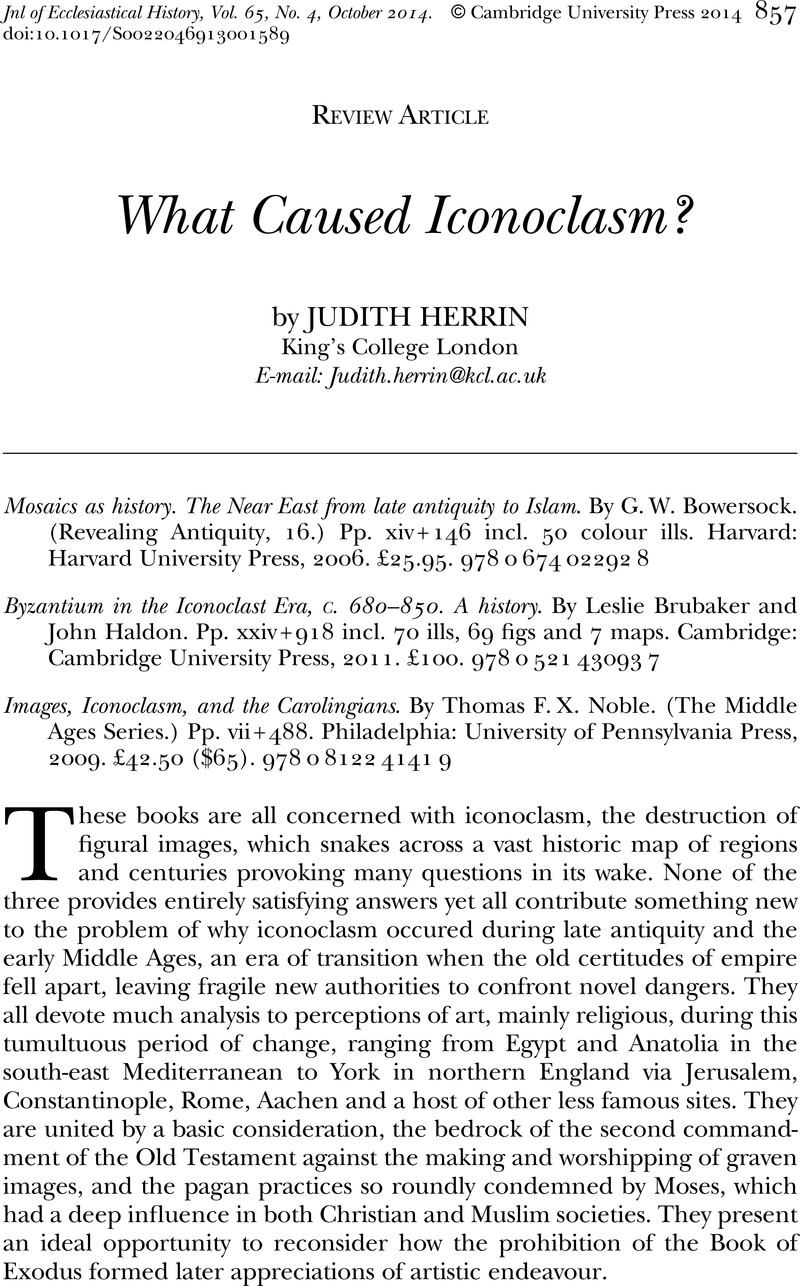Article contents
What Caused Iconoclasm?
Review products
Published online by Cambridge University Press: 11 September 2014
Abstract

Information
- Type
- Review Article
- Information
- Copyright
- Copyright © Cambridge University Press 2014
References
1 Brubaker, Leslie and Haldon, John, Byzantium in the Iconoclast Era: the sources, Farnham–Burlington, Vt 2001Google Scholar.
2 Evans, Helen C. and Ratliff, Brandie (eds), Byzantium and Islam: age of transition (exhibition catalogue), Metropolitan Museum of New York, 2012Google Scholar.
3 Dagron, Gilbert, ‘Holy images and likeness’, Dumbarton Oaks Papers xlv (1991), 23–33CrossRefGoogle Scholar. See also his Décrire et peindre: essai sur le portrait iconique, Paris 2007, 206–11.
4 Cameron, Averil, ‘The anxiety of images: meanings and material objects’, in Lymberopoulou, Angeliki (ed.), Images of the Byzantine world: visions, messages and meanings: studies presented to Leslie Brubaker, Farnham–Burlington, Vt 2011, 47–56Google Scholar.
5 Brubaker, Leslie, Inventing Byzantine iconoclasm, Bristol 2012Google Scholar.
6 Brubacker and Haldon, The sources, 36.
7 Grabar, Oleg, The formation of Islamic art, rev. edn, New Haven 1987, 43–71Google Scholar.
8 Ibid. 84–7.
9 Ibid. 86.
10 Ibid. 62.
- 2
- Cited by

